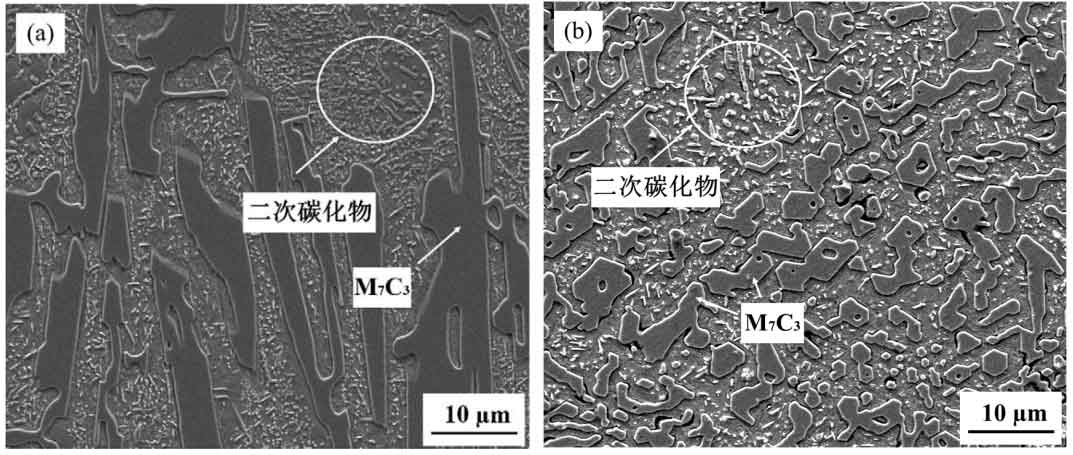Figure 1 shows the optical structure of high chromium cast iron obtained after corrosion with 4 vol.% nitric acid alcohol. Figure 1 (a) shows the as cast structure of high chromium cast iron. It can be seen from Figure 1 (a) that the white bulk eutectic carbide M7C3 is distributed on the austenitic matrix in a broken network. As shown in Figure 1 (B-D), the optical structure diagram of heating temperature after heat treatment at 900 ℃, 950 ℃ and 1050 ℃. Comparing the as cast diagram (Fig. 1 (a)) with the optical structure diagram (Fig. 1 (B-D)), it can be found that after heat treatment, a large number of fine secondary carbides are precipitated in the structure and dispersed between the matrix and eutectic carbide M7C3. The specific changes are as follows: as shown in Figure 1 (b), when the heating temperature is 900 ℃, the quenching temperature is low, and a large number of fine granular secondary carbides are dispersed between the matrix and eutectic carbides. As shown in Fig. 1 (c), when the heating temperature is 950 ℃, the secondary carbide grows and is spherical. When the temperature continues to increase to 1000 ℃ – 1050 ℃, due to the high heat treatment temperature, part of the secondary carbides melt back, the content of secondary carbides decreases, and the secondary carbides are further coarsened. As shown in Figure 1 (d), when the heating temperature is 1050 ℃, the dissolved content of secondary carbides is greatly reduced due to excessive heating.
As shown in Figure 2, the SEM of 900 ℃ and 950 ℃ high chromium cast iron is shown. The content of eutectic carbide M7C3 in high chromium cast iron was calculated by ippimageproplus software, and the result was 15 vol.%. It can be seen from Figure 2 that after quenching, eutectic carbides are distributed in rod and block shape, and some eutectic carbides M7C3 have holes. There is a white area around the eutectic carbide, which is wrapped by the eutectic carbide. The secondary carbides are rod-shaped and spherical, dispersed in the matrix and eutectic. The matrix supports and wraps eutectic carbides and secondary carbides.


